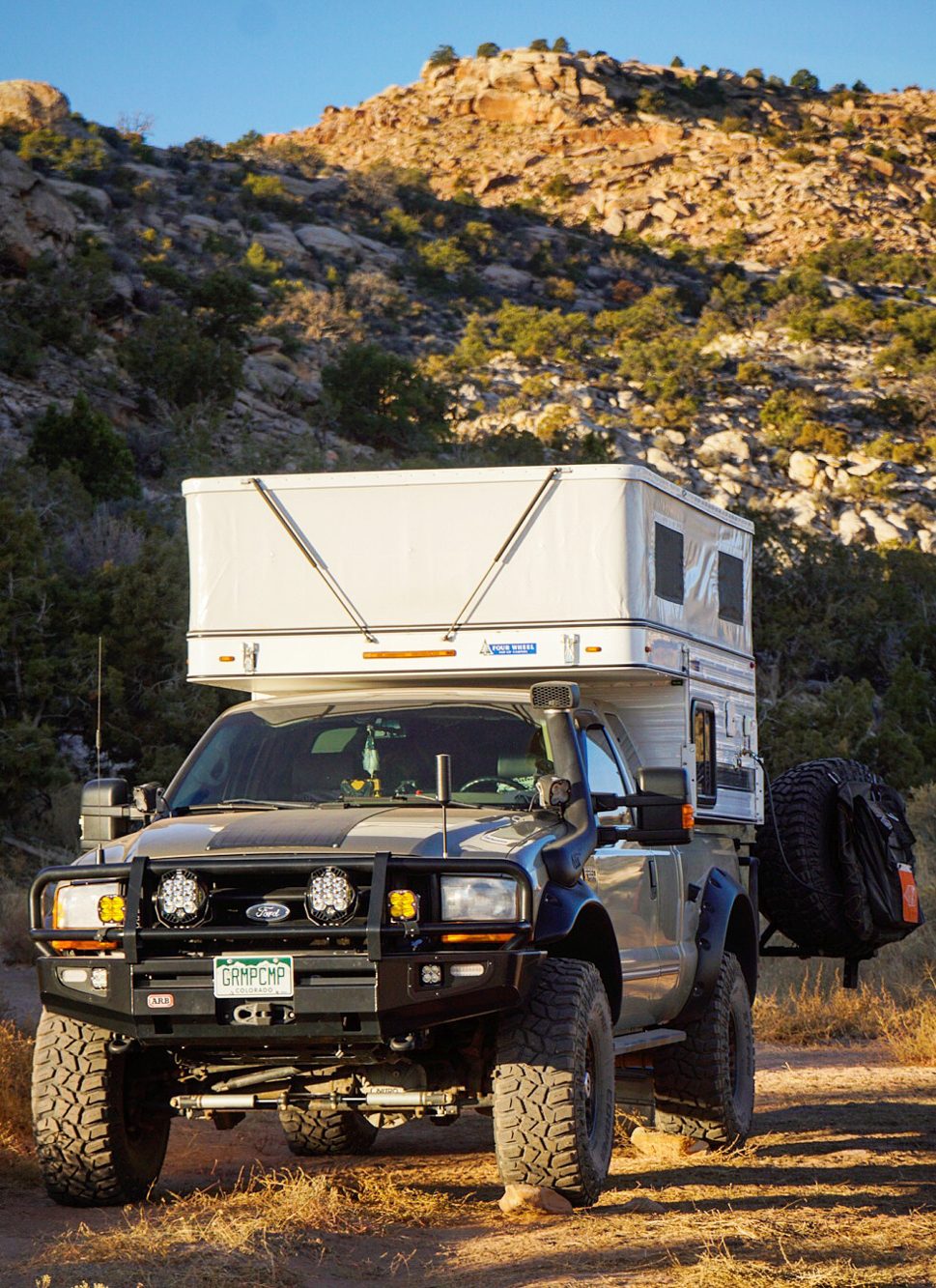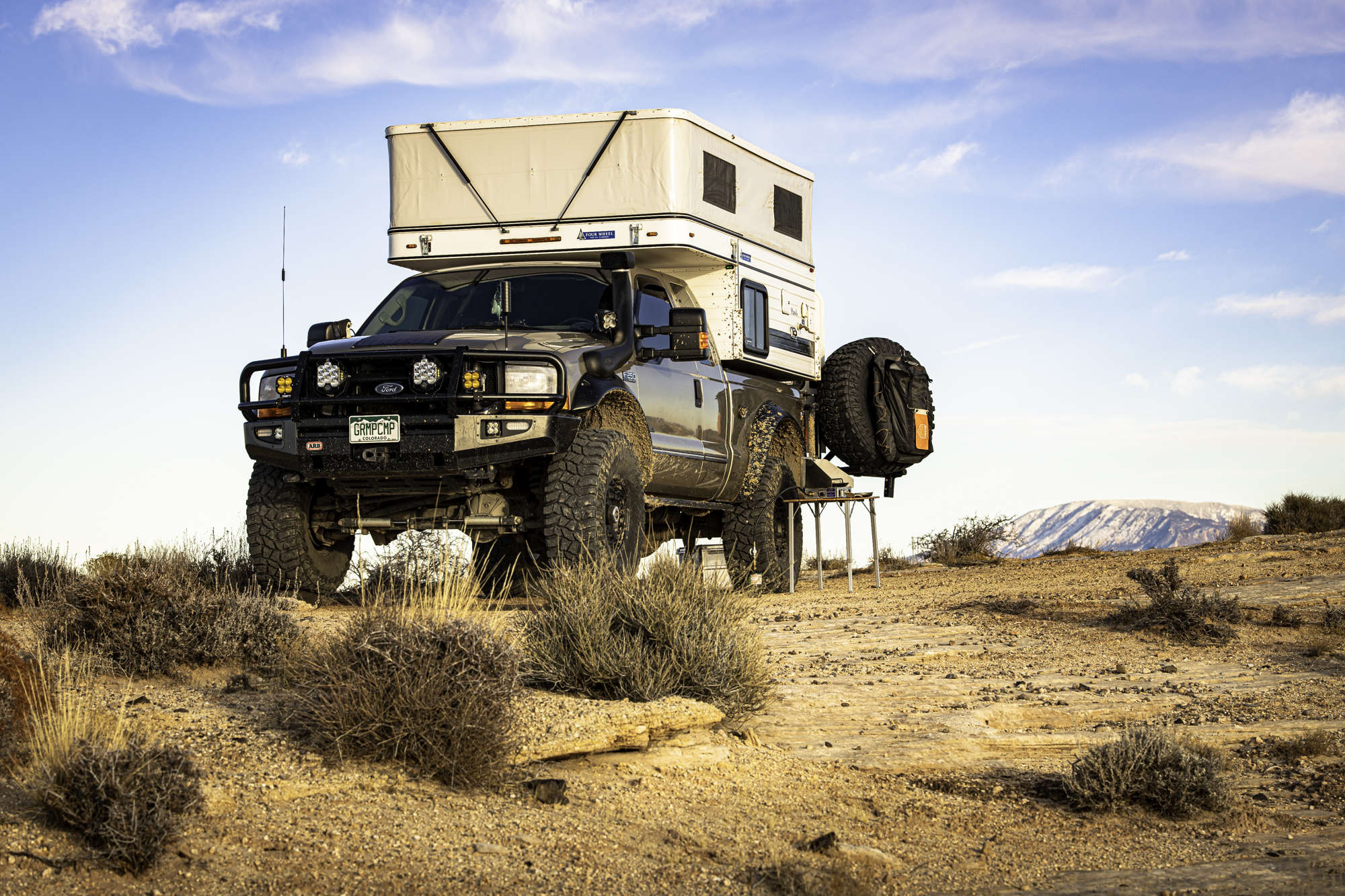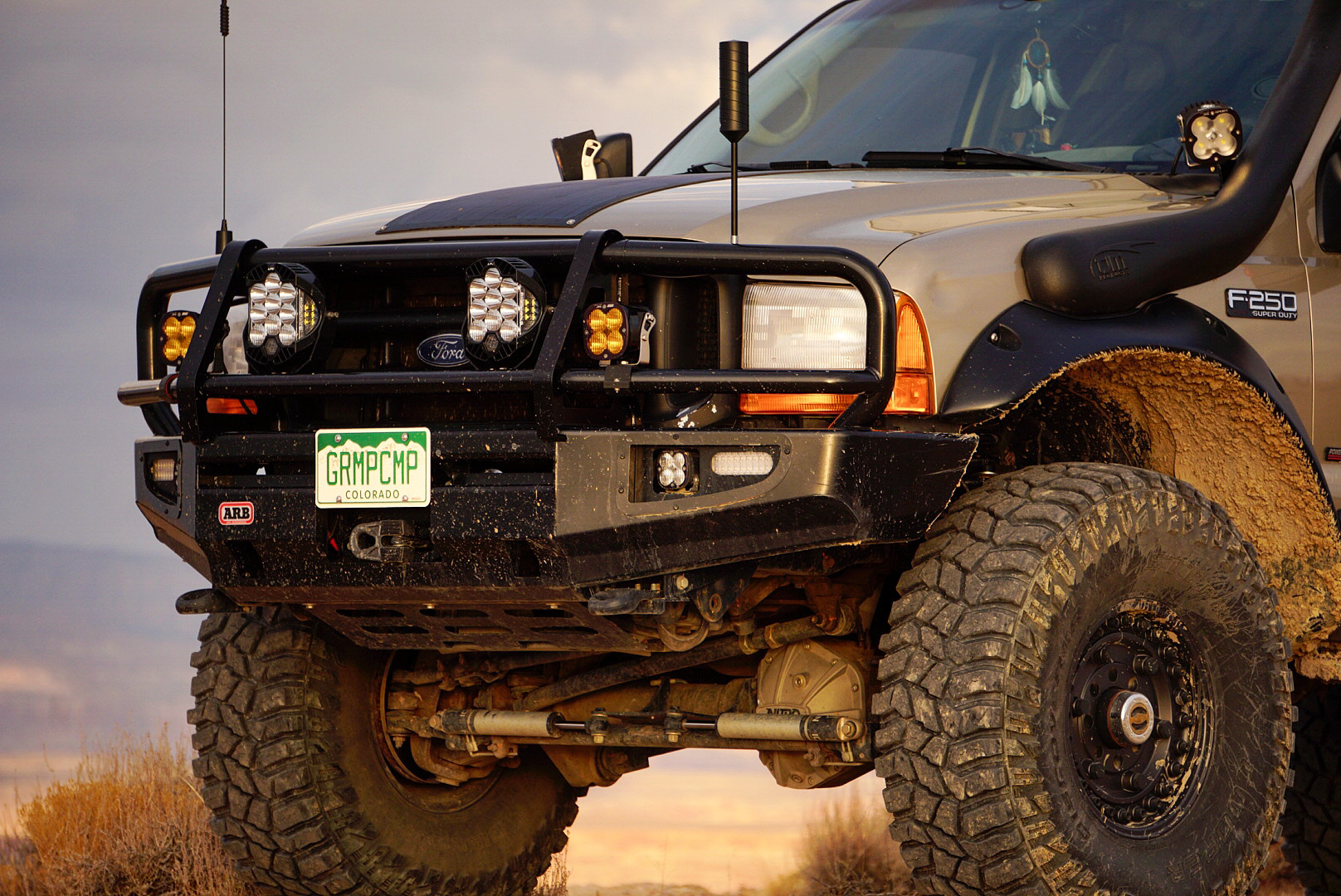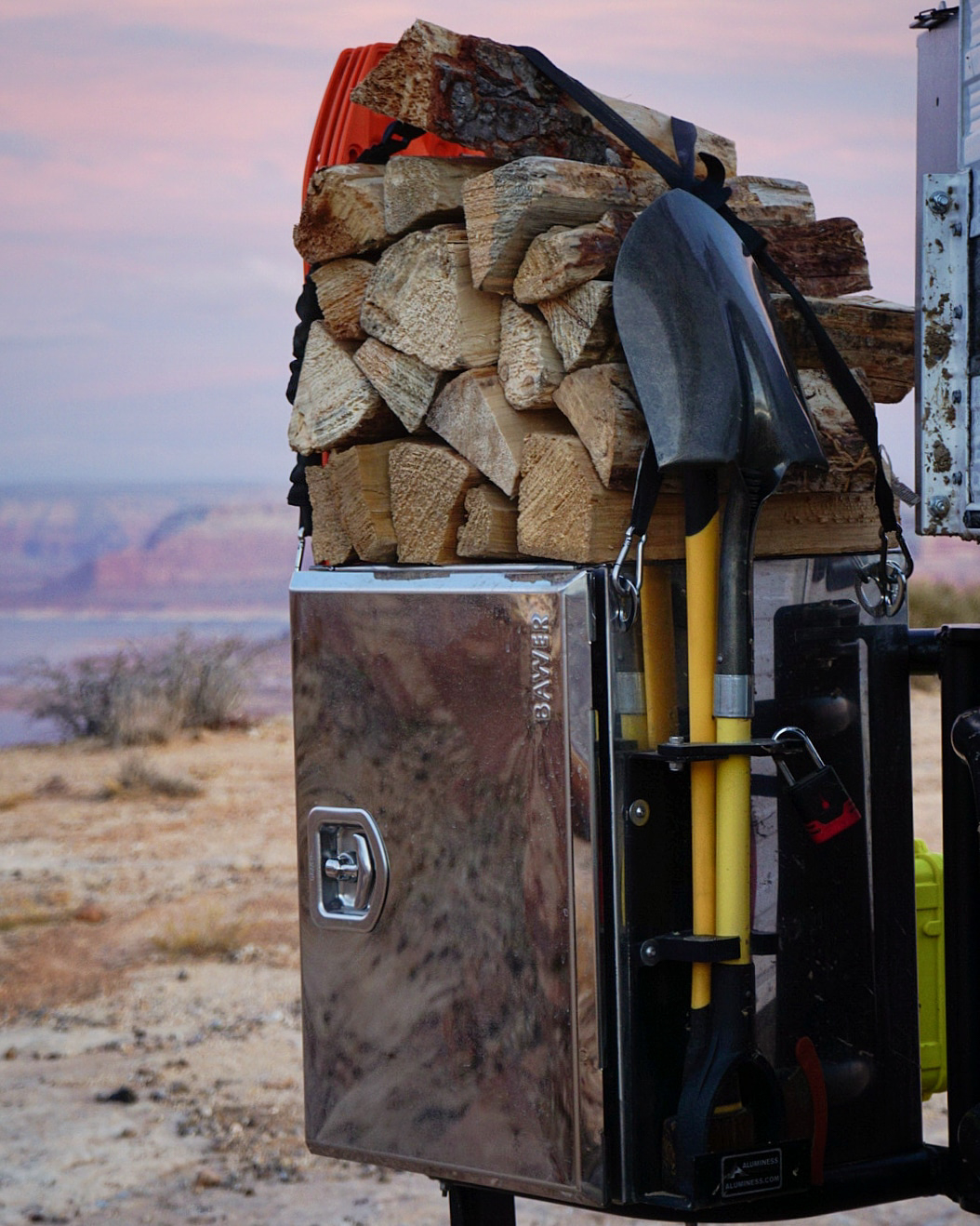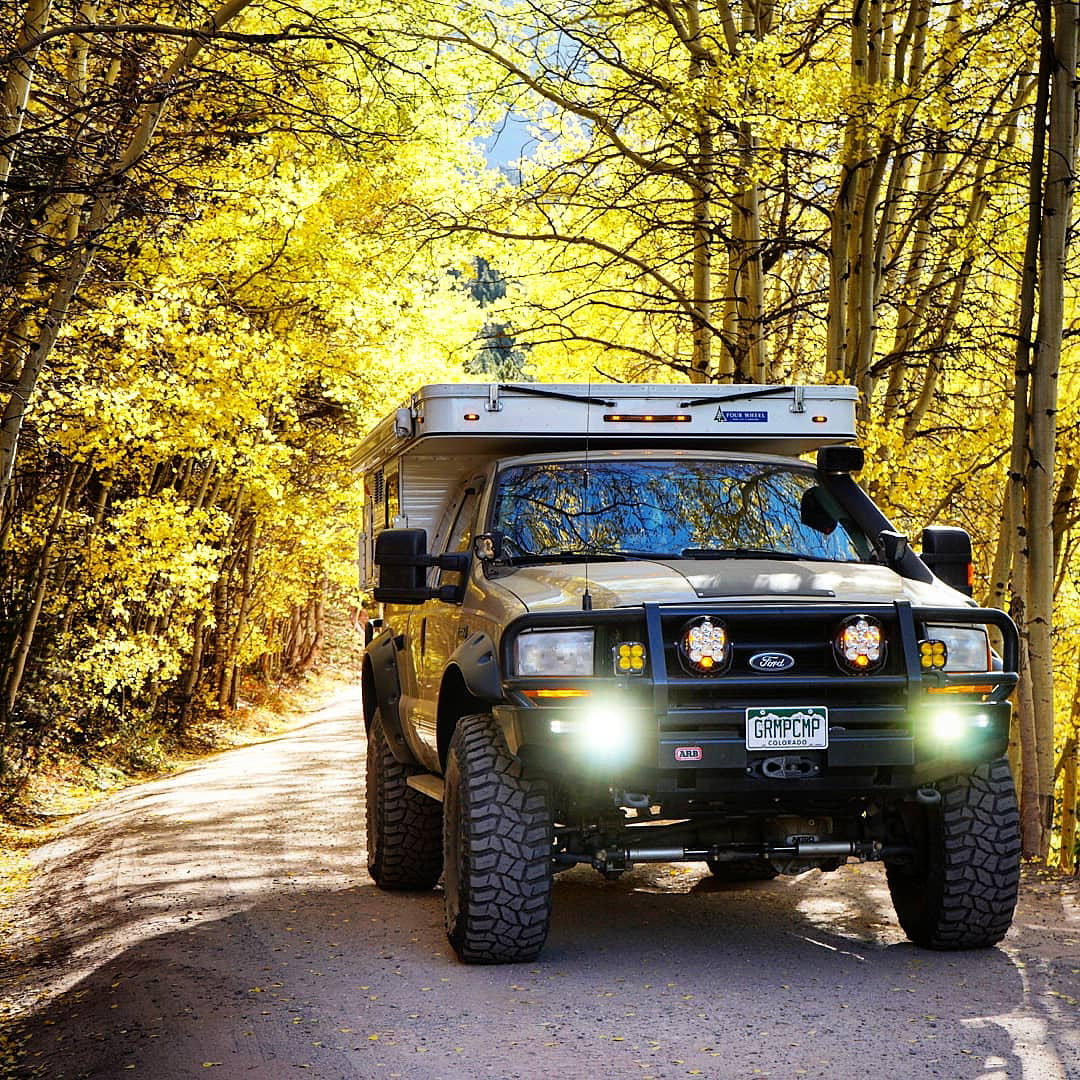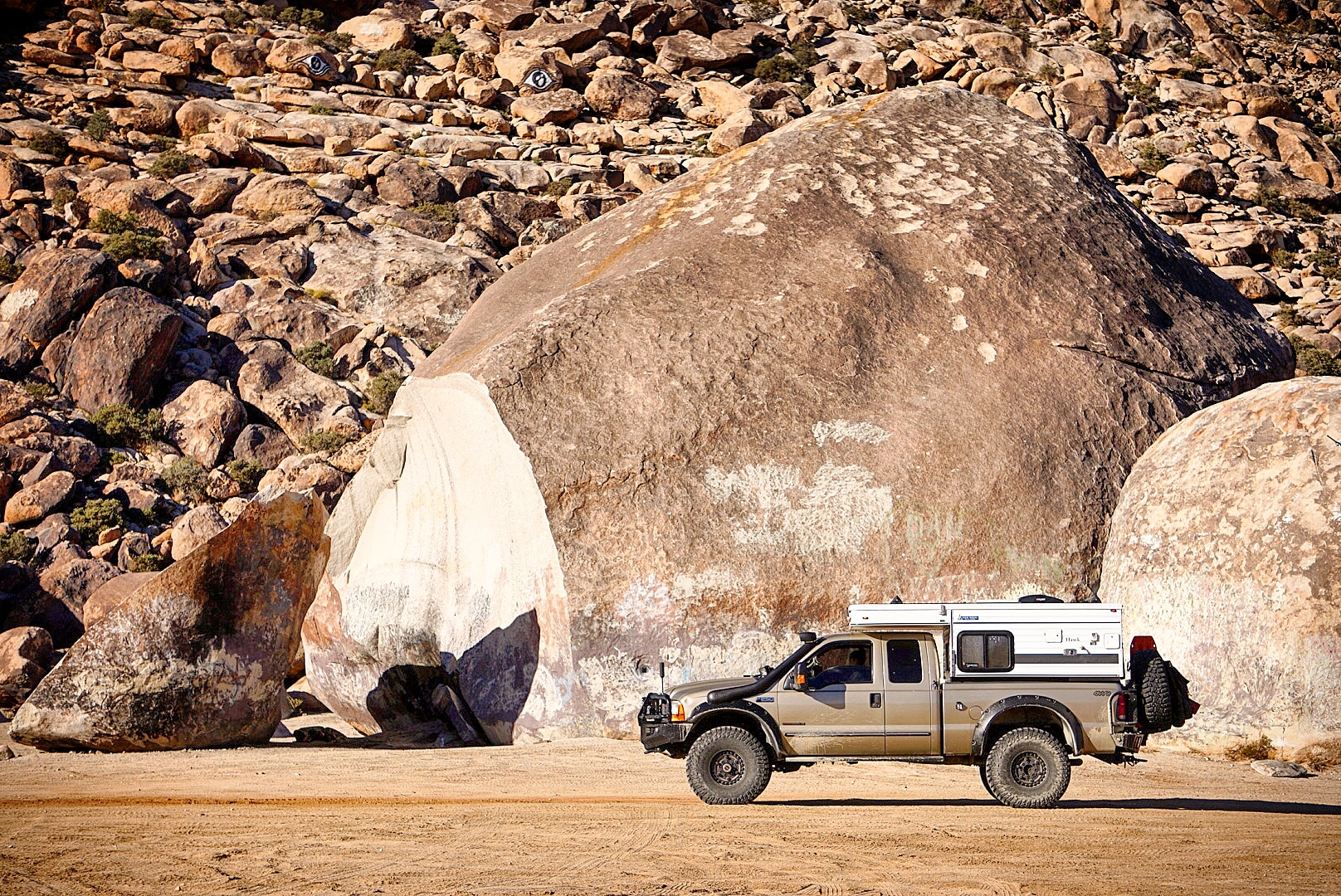There has always been something about old trucks with bed campers that captures my imagination. Maybe it’s the Texan in me or my childhood readings of Travels with Charley, but every time I see one, I long to leave the world behind in pursuit of an endless horizon. How could I not, though? A pickup with a camper is about as Americana as it gets. They are our nation’s 70 Series: affordable workhorses equipped to haul lumber to the yard or a family to the mountains with equal ease. In my opinion, there are few better options for exploring North America, which is why we’re going to take a closer look at one of the coolest overland truck camper builds around, Jon Burtt’s Gramp Camp.
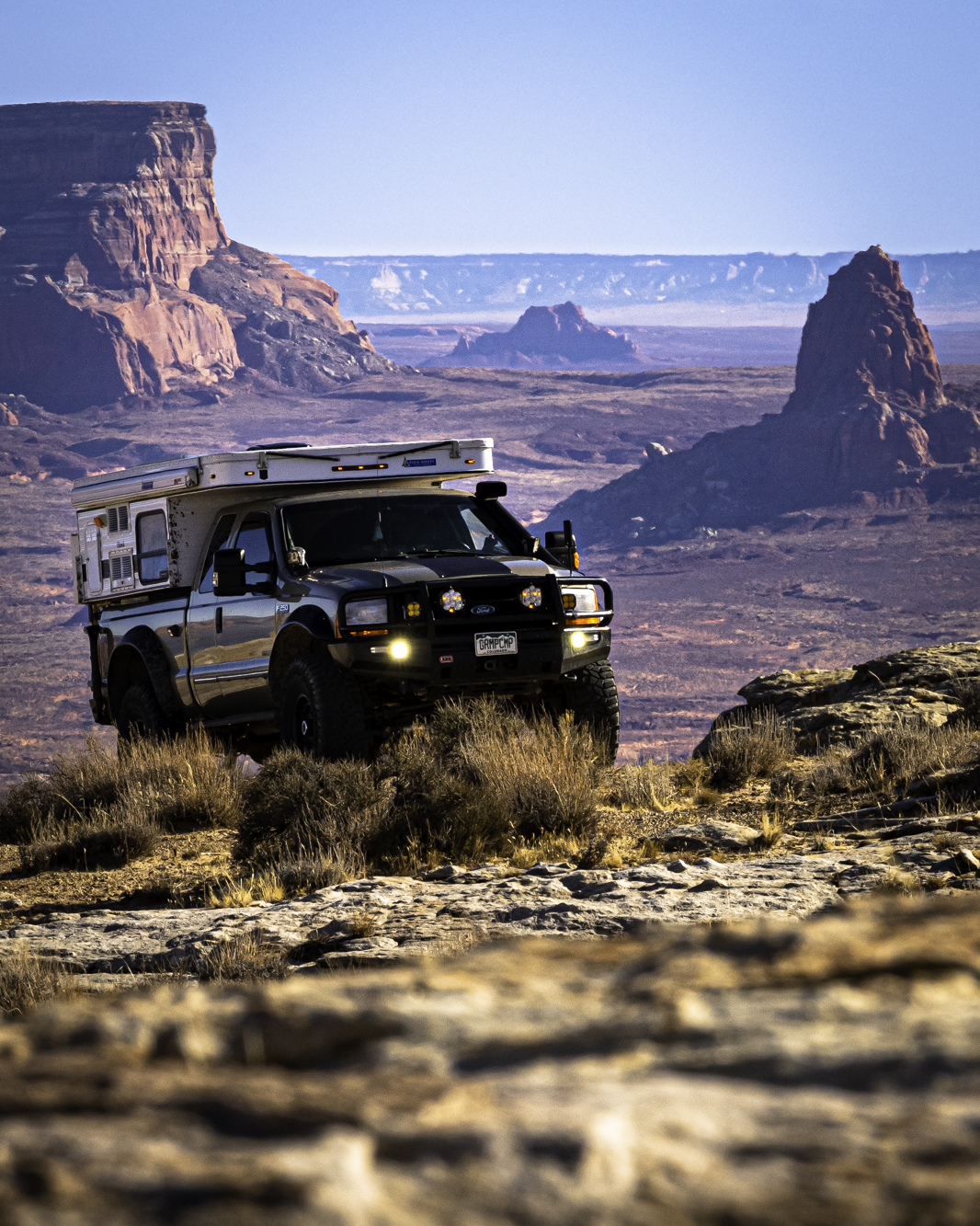
Photo by Justin Pitcairn – @pitcairnoverland
The Truck
Many of you may recognize Jon Burtt’s name from Instagram or the story we ran on his Tacoma a few years back. (You can read it here.) By the time he sold that rig, it was one of the most heavily modified and well-known Toyotas in the community, but Jon wanted something better. He wanted more payload, better fuel economy, a larger bed, and in general, a platform better suited to his needs, and the Ford Super-Duty was a perfect choice. Specifically, Jon chose a 2000 F-250 Super Cab Short Bed with the legendary 7.3L Power Stroke turbo-diesel. Besides being widely regarded as the most reliable diesel ever sold in a Ford, the 7.3L was produced before emissions and DEF requirements which allow it to run easily on low-quality diesel as well as the high-sulfur diesel found in foreign countries.
Unfortunately, the 7.3L is also known for being a bit loud. Okay, maybe more than just a bit loud, the term deafening is often used, which is why one of the first changes Jon made was adding sound deadening. He then turned to fix the factory seat situation, and by that, I mean replacing them. After 20 years of hard use, their peeling leather, and sagging foam left little support for the truck’s occupants, and Jon wanted to start fresh. So instead of reupholstering them, he sourced a set of orthopedic seats from Scheel-Mann USA. I have the same set in my Ford Excursion, and they’re darn good. You can read our full review of them here.
The final change in the cabin of this truck was a second-row seat delete to provide additional space for tools, a mounting location for a 50L ARB fridge, and, most importantly, some relaxation space for Jon’s adventurous pup.
Suspension, Axles, and Tires
Now we move to the really exciting stuff, the off-road and camper modifications, and there are a lot of them. Jon wanted to go big on the tires, but his 40×13.50r17 Cooper STT Pros weren’t going to fit without a lift and trimming, and that was the least of his worries. He also wouldn’t be able to turn to save his life, because the tires would quickly impact the front leaf springs any time he needed to make a corner. The easy solution would have been to run a slightly smaller tire, but where’s the fun in that?
Instead, Jon kicked things off by swapping to a Dana 60 axle in the front with Dynatrac Free Spin hubs, heavy-duty ball joints, and track bar, and PMF adjustable Radius arms. This axle from the 2006 Super-Duty uses coil springs, which improved performance as well as turning radius. This solved the main problem, but why stop there? He also swapped the rear for a Sterling 10.5 with an Auburn limited-slip and regeared both axles to 4.88:1 Nitro Gears. The total package made the truck 2 inches wider in the front and 2.5 inches wider in the rear, so a set of fender flares went on to even things out. The final touch was the suspension lift itself, an ARB Old Man Emu 2.25-inch lift with coils and shocks in the front, and custom-built Alcan rear leaf springs with Old Man Emu shocks in the rear.
Bumpers and Lights
Protecting the rear of the truck and toting the massive spare tire is an Aluminess bumper with dual swing-outs. It needed to be modified to accommodate the 40-inch STT Pros, but the final result looks very clean. This lightweight aluminum bumper also has integrated brake and reverse lights, Baja Designs Squadron Sports, and retains the factory Ford receiver. On top of the spare, you’ll find two Blue-Ridge Overland spare tire bags opposite from a polished aluminum box that carries a shovel, firewood, and a full set of four MaxTrax. There’s also an ARB dual compressor hidden away in the bed of the truck to help complete the task of airing up Gramp Camp’s 40-inch tires in a reasonable amount of time.
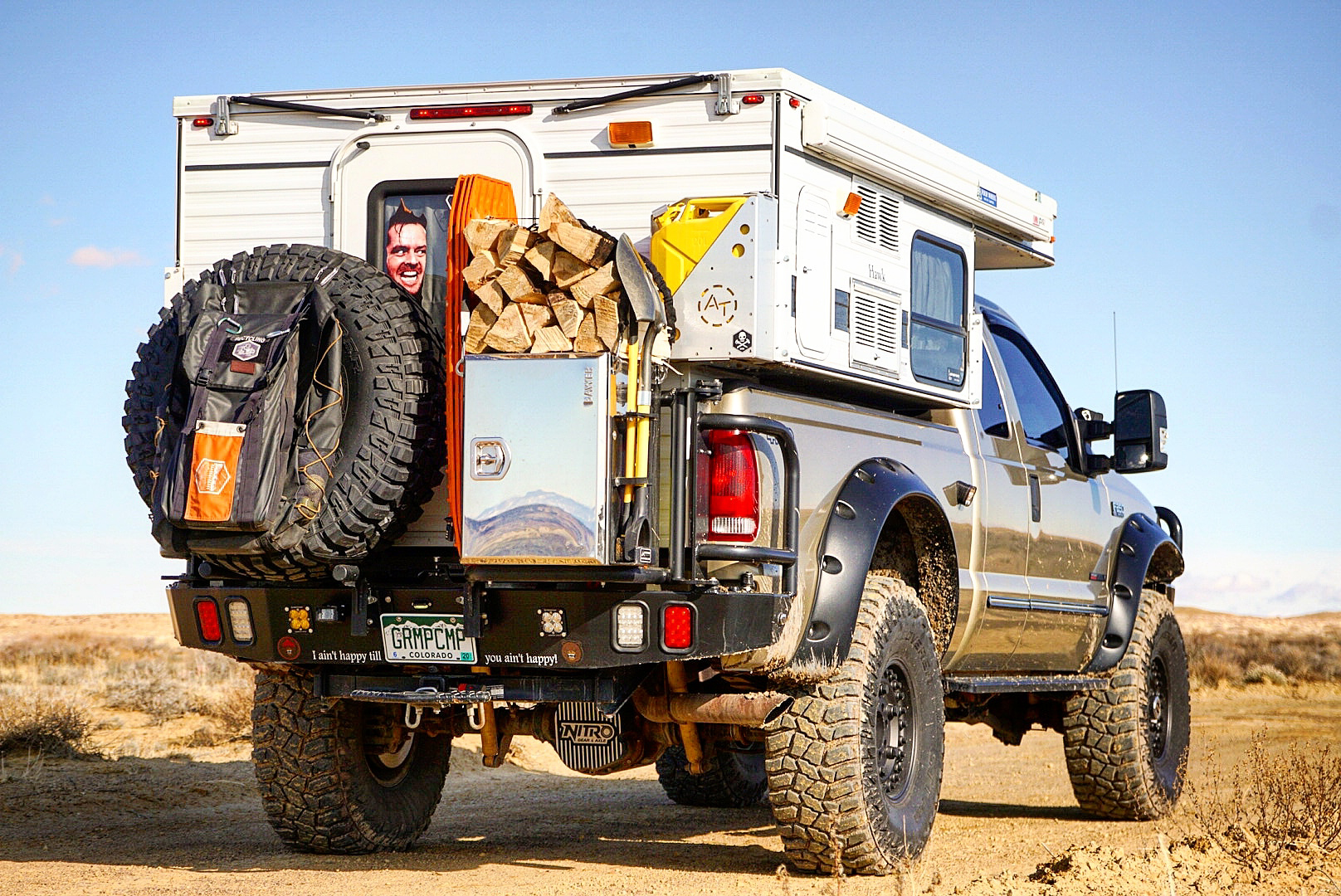
Because Jon is based out of Colorado, animal strikes were a big concern. The weight of his truck also meant it would be difficult for smaller vehicles to recover him should he get stuck, so a winch was a priority. To address this, he opted to go with the trusted ARB front bumper with a Come Up 12.5k winch synthetic line and Factor 55 FlatLink. To improve visibility and help avoid a strike in the first place, he installed an array of Baja Designs lights that could illuminate nearby planets. The main load of lumens comes from a pair of LP9s and XL80s mounted on the bumper itself. XL80’s mounted on modified SDHQ ditch light brackets back up the main lights, and provide a wide field of view in all conditions. For visibility in camp or on tight trails, Jon installed angled Baja Designs Squadrons on the bedsides.
Finishing Touches and The Camper
Finishing off the front of his Ford are two other additions. The first is a brand-new, and rather rare, TJM snorkel for the 7.3L diesel to help keep dust and water from clogging the air filter on long trips. The second is a Lensun 80-watt solar panel on the hood, which is not only functional but looks pretty darn good as well.
None of this makes for comfortable camping, though. For that, Jon relies on a 2014 Four Wheel Camper Hawk. It’s a Front Dinette model with the Silver Spur interior and is perfect for keeping the crew warm and comfortable in any weather conditions. Inside there’s a bed, fridge, batteries, toilet, and pretty much anything you would expect to find in a camper. It’s the perfect home on wheels, but to increase the time and distance Gramp Camp can travel off-the- grid, Jon made two final changes. He added 200 watts of solar on the roof to fuel the batteries, and a 55-gallon diesel replacement tank from Aero Tanks to fuel their adventures.

I have the chance to write about a lot of amazing builds here at Expedition Portal, but for some reason, the domestic ones feel different. Don’t get me wrong, I love vehicles like the Land Rover Defender and Toyota Troop Carrier. Their classic lines and iconic heritage will always remind me of travel in faraway lands. But truck campers like Jon’s just hit me closer to home. They’re the overland vehicles we all grew up with. You may not have owned one, but maybe your grandfather, uncle, or neighbor did. Or perhaps, like me, you only saw them in passing, yet still managed to fall in love with their promise of adventure. I think John Steinbeck captured the feeling best when describing people’s reactions to his own truck camper.
“I saw in their eyes something I was to see over and over in every part of the nation- a burning desire to go, to move, to get underway, anyplace, away from any here. They spoke quietly of how they wanted to go someday, to move about, free and unanchored, not toward something but away from something. I saw this look and heard this yearning everywhere in every state I visited. Nearly every American hungers to move.”
It is that hunger, that burning desire to travel, that American truck campers have been stoking for decades, and with builds like this, they’ll continue to do so for decades to come.
To learn more about Jon Burtt’s camper and follow his adventures, visit his
Instagram here.


